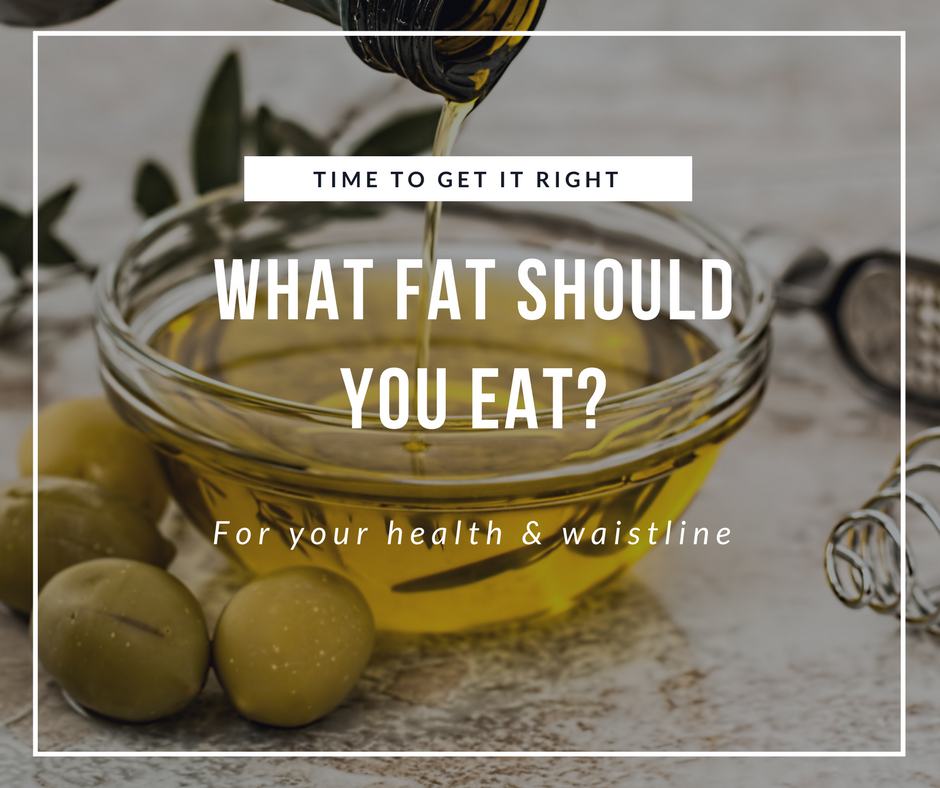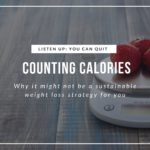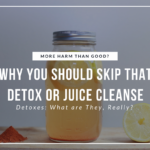The Power of Fats For Your Health (and Waistline)
It’s not uncommon for my clients to have some big questions for me about eating fat. Some have been afraid they’ll gain weight by eating too much or they do not know what types are good for their health. There’s a lot of information out there, and some of it just isn’t correct.
So, let’s uncover some of the true facts about dietary fat so you can fit it into your diet and lifestyle today.
What Happens When You Eat Fat?
After consuming fats, your body will break them down and ultimately either use them to fuel functions and cells of the body or store them in fat cells.
Fat is important for keeping our bodies operating right because it affects a lot of its processes, including:
- Blood clotting
- Inflammation
- Nervous system impulses to the brain
- Blood vessel constriction
- Airway constriction
- Pain
- Hormone production
- Immunity
- Nutrient absorption
Plus, healthy fats may also:
- Lower LDL “bad” cholesterol
- Increase HDL “good” cholesterol
- And sometimes even help with depression
Maybe you’re now understanding the importance of dietary fat for the body’s functions but are still wondering about the whole “fat-free” craze. Are fats bad for weight loss? Do they cause weight gain? Let’s address that right now.
The “Fat Makes You Fat” Myth
Some people are afraid of fat and think eating any type of it will lead to weight gain — the “fat you eat is the fat you wear” sort of mentality.
This is a big myth we’ve believed for years, starting with the low-fat movement in the ‘90s and unfortunately still continuing in some diets today.
Let’s break it down:
- While fat is more calorically dense (nine calories per gram versus four calories per gram for carbohydrates and proteins), it’s also necessary for proper nutrition and health (for the reasons I mentioned above).
- Plus, some nutrients like vitamins A and D are better absorbed when they’re eaten with fat.
- Also, fat is important for both enjoying your food and keeping you fuller for longer periods of time. What I mean is that you’re more satisfied when you include fat in your diet. This is great news for busy people — and for your waistline!
If you’re a busy, working professional like most of my clients — someone who hardly has enough time to schedule a snack during the day — you can really benefit from the satiety of healthy fats. You can enjoy that slow burn of energy during your work day.
But now this begs the question: what are healthy fats, and which ones do you actually need to avoid?
What are Healthy Fats?
It’s been shown that the best approach is to eat a healthy mix of different kinds of fats. In case you don’t know (or recall from science class) there are 3 main types of fats: saturated fats (found in red meat, dairy, eggs), monounsaturated (nuts, avocado) and polyunsaturatated fat (flax, fish and seed oils).
This last group, the polyunsaturated fats also include the “essential” omega 3 fatty acids. They are considered essential because your body cannot make it so it must be consumed in your diet. The best sources include flaxseed oil, fish, shellfish, krill or simply a fish oil supplement (like cod liver oil).
If all of that is starting to sounds a bit overwhelming, don’t worry. What is key is to ensure that you’re consuming this variety of fats from healthier sources (whole foods).And to avoid non-whole food, refined fat sources like non-perishable, factory produced food. I’ve broken in down into 2 lists for you below.
Avoid sources of fat like:
- Shelf-stable refined oils: corn, safflower, palm, and soybean oil (currently largest source of omega 6s consumed by Americans), etc.
- Factory-farmed and highly processed animal products
And let’s talk about the good guys.
Focus on healthy fat sources like:
[images style=”0″ image=”http%3A%2F%2Frosie.davidstirrat.com%2Fwp-content%2Fuploads%2F2017%2F06%2F5.png” width=”800″ align=”center” top_margin=”0″ full_width=”Y”]
Omega 3s:
It’s harder for our bodies to use plant-based sources of omega 3s, so it’s best to get them from animal marine sources (fish) if you can.
- Fish and fish oil
- Marine algae (like seaweed)
- Seeds (like flaxseeds, chia, sunflower and hemp seeds)
Omega 6s:
- Seed oils (like sunflower)
[images style=”0″ image=”http%3A%2F%2Frosie.davidstirrat.com%2Fwp-content%2Fuploads%2F2017%2F06%2Ffats-blog.png” width=”800″ align=”center” top_margin=”0″ full_width=”Y”]
Monounstaturated:
- Nuts
- Avocados
- Olives
- Extra-virgin oils
- [images style=”0″ image=”http%3A%2F%2Frosie.davidstirrat.com%2Fwp-content%2Fuploads%2F2017%2F06%2Ffats-blog-1.png” width=”800″ align=”center” top_margin=”0″ full_width=”Y”]
Saturated:
- Coconut (whole or cold-pressed oil)
- Pasture-raised/grass-fed dairy and animal products





